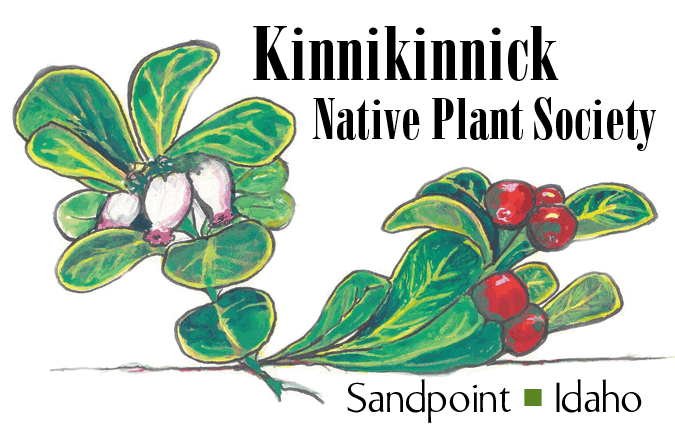Hooker's Fairybells
(Prosartes hookeri)
Hooker’s Fairybells fruit
As summer ripens, many native plants offer interest by way of unusual seed pods or colorful berries. Prosartes hookeri, commonly called Hooker's Fairybells or Drops-of-Gold, does just that. Currently, in the North Forest habitat in the Native Plant Arboretum, Hooker's Fairybells is adorned with oblong, scarlet-red, smooth berries peeking out from under green-leafed stems. This rhizomatous member of the lily family is native to the Pacific Northwest, ranging happily throughout USDA hardiness zones 3 to 8 at elevations up to 5,000 feet.
Hooker’s Fairybells prefer partial to full shade in damp areas such as a mixed forest understory, wooded ravines or riverbanks. It thrives in fertile, acidic, well-drained, moist soil. In the landscape garden, Hooker’s Fairybells is an excellent medium-height plant in a shaded perennial bed, on a shady slope, or to line a woodsy path.
Hooker’s Fairybells flowers and leaves
One- to three-foot stems arch gracefully suspending leaves parallel to the ground for maximum light. From May to June, 1- 3 white, delicate, bell-shaped flowers dangle under the twin leaves at each stem's end. Rainwater drips off the sharp pointed leaf tips protecting the flower along with native bees and other pollinators that seek it out.
Hooker's Fairybells berries contain 4-6 seeds, a food source for ground feeding birds. Slugs also consume the sweet berries, passing the seeds. The leaves produce an organic compound that keeps the plant from being decimated by slugs, insects and animals as they graze on the tasty berries.
Hooker's Fairybells is found on page 160 of the KNPS publication, Landscaping with Native Plants in the Idaho Panhandle, available at local bookstores and the Bonner County History Museum.
Plant Notes are created by the Kinnikinnick Native Plant Society. To learn more about KNPS and the North Idaho Native Plant Arboretum, explore www.nativeplantsociety.org.


